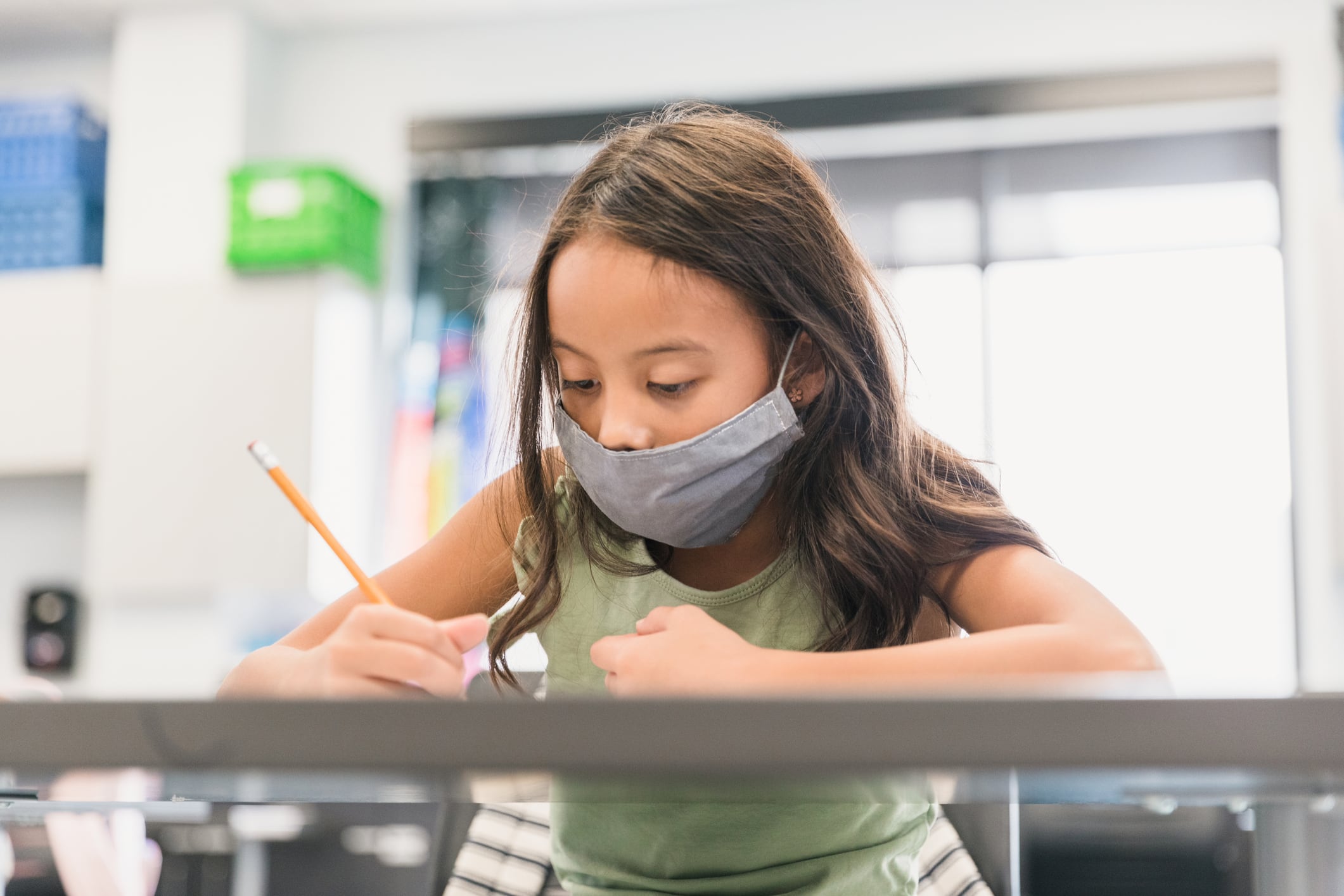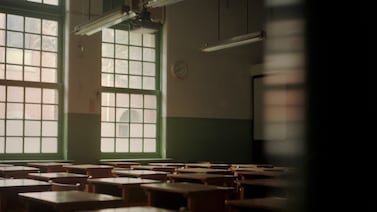Two and a half years after the pandemic arrived, it’s clearer than ever that COVID’s disruption had punishing consequences for millions of students.
Students in fourth and eighth grade saw unprecedented declines in math and significant dips in reading achievement between 2019 and 2022, according to the results of national exams given last school year and released Monday. The declines were broad-based — affecting students in every state and every region of the country.
“The results point out and confirm that this is a pretty massive hit to student achievement in our country,” said Scott Marion, a testing expert and member of the board that oversees the tests.
Other research has already shown that academic progress was derailed during this period. But the results from the closely watched National Assessment of Educational Progress provide the most detailed and authoritative accounting yet, with data coming from a representative set of students nationwide and allowing for comparisons across states and some cities.
Some more recent data has suggested that students have begun to recover lost ground, but that progress has been modest, inconsistent, and incomplete. Though schools have shed some of the pandemic’s trappings this year, COVID’s effect on students has lingered.
It’s no mystery why, as the pandemic dramatically disrupted education across the country. Officials quickly shuttered schools in the spring of 2020 and the quality of virtual instruction was uneven. In some places, school buildings remained closed for much of the following year or opened on a part-time schedule. Student attendance has been unusually low even into last school year.
Children’s lives outside of school also changed: They spent more time on devices and less time with friends. Many families lost jobs and income, at least temporarily. Some children saw their relatives or caregivers die.
“The pandemic did set students back,” said Matt Prusiecki, the superintendent of Decatur Township schools in Indiana. “Not only academically, but socially, emotionally — really in all facets of their growth.”
Students experienced the largest math declines on record
In eighth grade math, scores fell by 8 points, bringing student performance to a level not seen since 2000. The share of students deemed proficient dropped from 34% to 26%. Fourth grade math scores, meanwhile, fell by 5 points, similar to 2003 levels.
In both grades, math scores fell by the largest amount on record. Still, achievement remains substantially higher now than in 1990, when the exams were first given.
In reading, scores fell by 3 points in both fourth and eighth grade. Proficiency dipped from 35% to 33% in grade four and 34% to 31% in grade eight. Results from 2022 continued a downward trend, as scores also fell between 2017 and 2019. Overall, reading scores were at the same level as in 1992, the first year of the exams.
In a press briefing, Education Secretary Miguel Cardona described the scores in both subjects as “appalling and unacceptable.”
The declines don’t mean that students failed to learn anything or forgot things they already knew between 2019 and 2022. Rather, students did learn over that period, but progressed at slower rates than their peers had in prior years.
All states see some scores decline and none see gains
No state was completely spared from the pandemic’s academic wreckage. Every state in the country saw declines on at least one exam, and students in most states lost ground on multiple exams. Similarly, among 26 cities that participated in the exam, scores fell on at least one test everywhere.
Not a single state saw clear gains on any test. (Students in schools run by the U.S. Department of Defense improved in eighth grade reading.)
Marion, who was a member of his local school board in New Hampshire, said the widespread declines highlight the far-reaching nature of the pandemic. “We proudly kept our schools open,” he said. “But education wasn’t normal — little kids were learning to read with masks on, and kids were not working collaboratively on science projects.”
Peggy Carr, head of the U.S. Department of Education center that administers the exams, said, “There is nothing in this data that tells us there is a measurable difference between states and districts based solely on how long schools were closed.” The center did not provide any specific analysis on this issue, though.
A Chalkbeat analysis of the data found mixed evidence. In fourth grade math, states where schools were fully open for longer tended to see smaller declines in scores. In eighth grade math and fourth grade reading there was also a relationship, but it was very modest. In eighth grade reading, there was no correlation at all.
The inconsistent pattern is reflected in individual state scores. For instance, California — the country’s most populous state, where school buildings were notably slow to fully reopen — saw score declines that were similar or slightly smaller than the country as a whole.
State results come with larger margins of error than the country as a whole, though, and many factors could affect score changes. Chalkbeat’s analysis can’t prove cause and effect. More granular research has shown that students who experienced more virtual learning tended to fall further behind.
Schools are still feeling those consequences. In Decatur Township, a high-poverty district in Southwest Indianapolis, schools were either virtual or hybrid for the entirety of the 2020-21 school year, largely due to local health guidance. That made teaching and learning a difficult challenge.
“There was a lot of disjointed instruction,” said Prusiecki, the superintendent.
Did existing gaps grow? It depends.
The pandemic posed big challenges for all students and schools but particular ones for vulnerable kids. For instance, those from low-income families often had a harder time with virtual instruction because they didn’t have access to reliable internet.
That’s one reason that many feared that the pandemic would disproportionately hurt students who were already behind. The latest NAEP data suggests that happened in some but not all cases.
For instance, in fourth grade math and reading, scores for the highest-performing students changed modestly, if at all. But the lowest-performing students saw particularly large drops. This continues a trend seen even before the pandemic.
Black and Hispanic students also experienced larger-than-average dips on fourth grade tests, widening already yawning test score gaps compared to white and Asian American students. Such disparities did not increase in eighth grade, though.
And unlike some other data, there was no consistent evidence that gaps between low- versus middle- and high-income students grew. Students with disabilities and English language learners also didn’t see especially big changes — remarkably, if anything those groups seemed less harmed academically.
Meanwhile, score changes in large cities roughly tracked the country as a whole, except that scores did not decline in eighth grade reading. Drops in performance were similar in charter versus district schools. Catholic schools, which tended to be quicker to reopen, did not see any declines in fourth grade math or eighth grade reading.
There’s been some — slight — evidence of progress
The latest NAEP scores aren’t a surprise. Other assessments — interim tests given by schools, state exams, a different NAEP test released in September — have also shown declines in learning.
Here’s the one piece of good news: Although the NAEP scores can’t show it, learning loss recovery appears to have begun, according to other research.
John Arthur, a sixth grade teacher in Salt Lake City, Utah, said he’s seen progress because he has been able to pack more content than usual into his lessons. Zoom school forced him to trim the fat off his typical lesson, and he continued to zip through content upon returning to the classroom.
“Everything got faster and tighter and more succinct because it had to be — and that has continued on now,” he said. “I can cover more in a day than I used to be able to.”
But there’s still a long way to go in the typical classroom. One study found that students in elementary grades had recovered roughly one-fifth of what they had lost. In middle school, though, there was little evidence of recovery.
Schools are adding optional time, tutoring, and staff
Nationally, schools received $190 billion in emergency COVID relief, some of which is earmarked specifically for making up for learning loss.
With that money, schools have adopted a variety of catch-up strategies: Chicago, New York City, and Memphis and many others have expanded summer schools. A number of Michigan districts have added more small group instruction. New York City added an after-school program specifically for students with disabilities. Chicago, Arkansas, New Mexico, and elsewhere have hired hundreds of tutors. Houston created a peer tutoring program.
Schools have generally shied away from adding time to the existing school year or day, though, instead opting for optional programming. Among 6,500 students in Decatur, for instance, officials estimate that some 500 participated in summer school each of the last two summers and some 800 were in after-school programs. They’ve also added reading specialists in every elementary school who pull kids out for small group work.
“We definitely haven’t taken the foot off the gas,” said assistant superintendent Stephanie Hofer. “The sense of urgency is probably greater right now.”
The progress last school year suggests that schools’ efforts may be paying off. But there have also been myriad challenges.
Tutoring initiatives have often struggled to reach the “high dosage” threshold — multiple sessions a week of small group, in-person work during the school day — that researchers say is likely to work best. Staffing shortages have meant that schools can’t hire all the new people, including tutors, they expected. In some cases, attendance for optional programming has been less than officials hoped.
Some districts have directed big chunks of money at efforts that likely won’t help students who suffered most from the pandemic, like longer-term building upgrades. And some researchers argue that the COVID relief funding simply isn’t enough.
Tom Kane, a Harvard professor who has studied learning loss, says that he fears that school plans are not ambitious enough for the amount of ground they need to make up.
“What most school districts are doing now is the equivalent of shooting bottle rockets at the moon,” he said. “The things they’re trying are directionally correct, but nobody has actually added up the amount of thrust that is going to be needed.”
Matt Barnum is a national reporter covering education policy, politics, and research. Contact him at mbarnum@chalkbeat.org.





